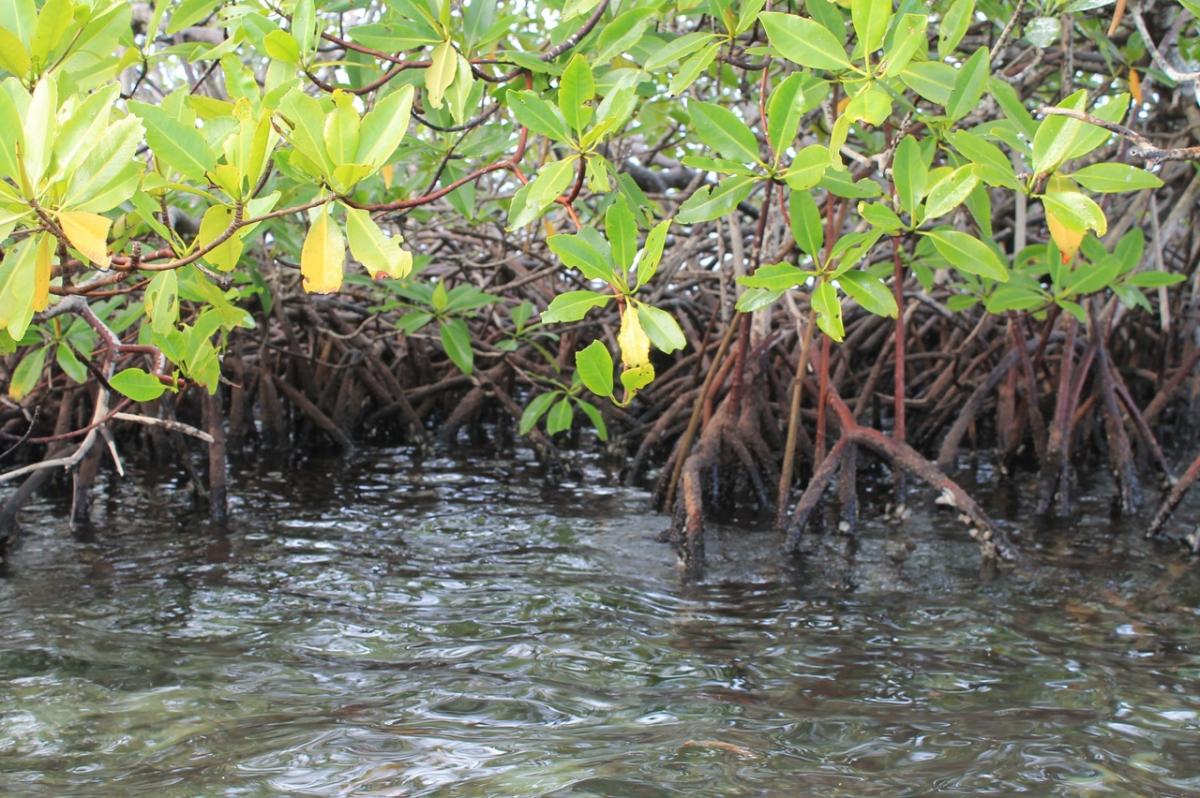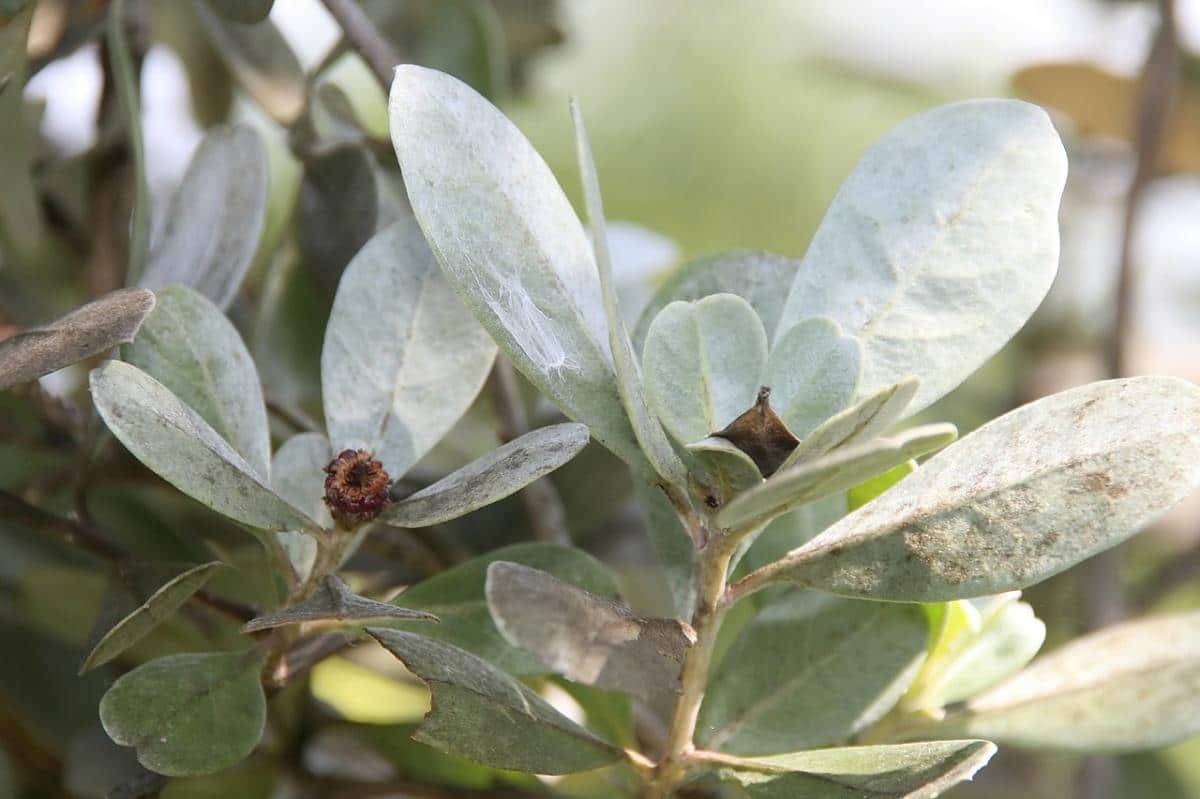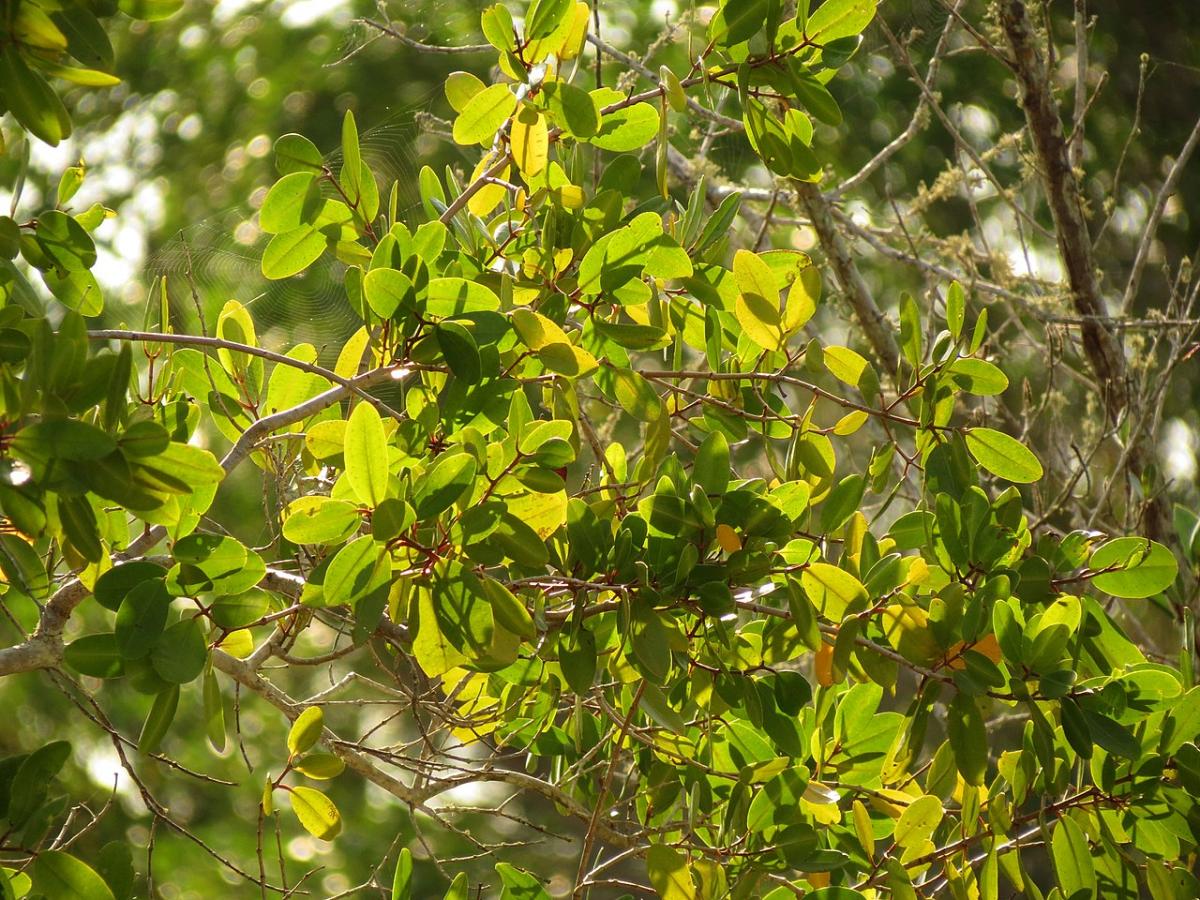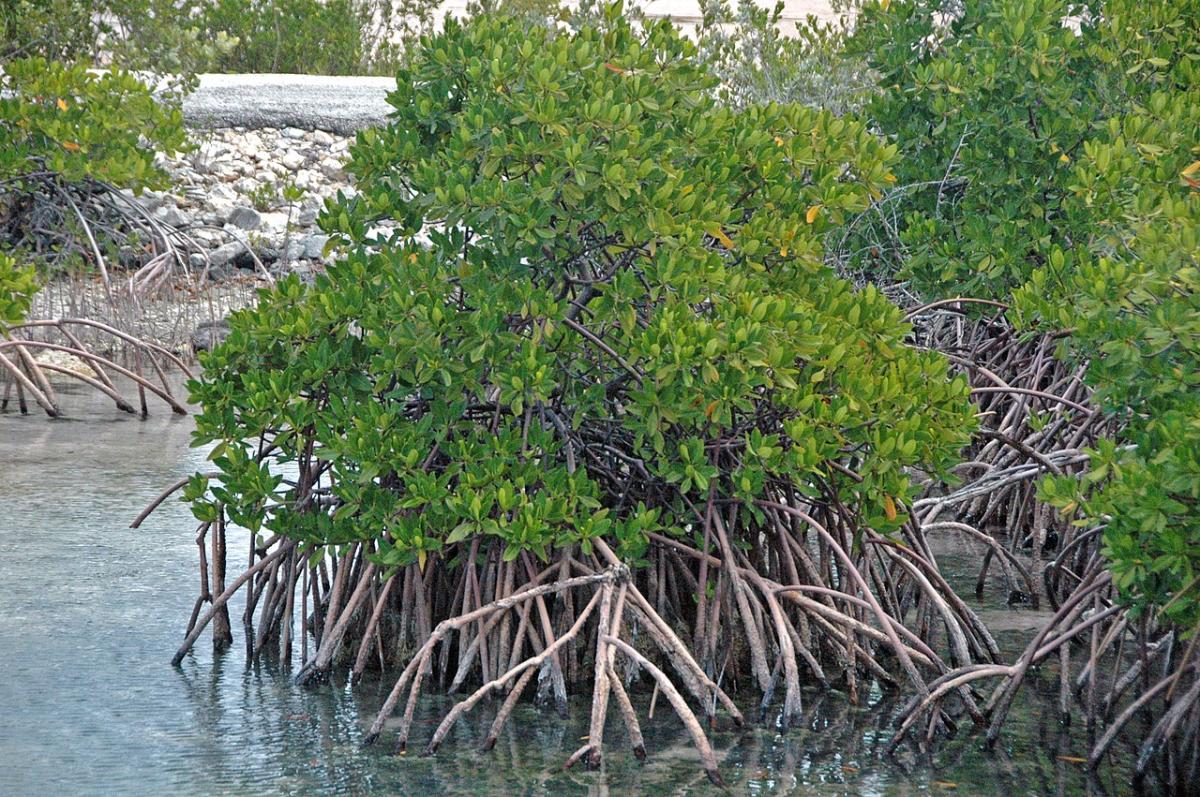
In tropical and subtropical regions we can find a very particular type of biome: the mangrove swamp. This word derives from mangrove, an English, German and French term, which comes from a Caribbean that translates as twisted tree. And, certainly, they are plants that from an early age can become twisted due to the force of the tides and / or the wind.
But also have several important benefits for the flora and fauna that live inland, which includes humans, since thanks to them the impact of hurricanes and tsunamis is much less than it would be if the coasts were unprotected.
What is a mangrove?

A mangrove It is a biome that is made up of trees capable of living in areas where there are high concentrations of salt, as in the intertidal zones that are near the mouths of rivers, streams, marshes, coves or inlets and gulfs of the tropical regions of the world.
The vegetation that grows here is known as mangroves, which usually have aerial roots known as pneumatophores. These allow plants to breathe even if they are submerged, something that happens frequently on the coasts, or even if they live in flooded land.
Where are mangroves found and what is their importance?
We can find mangroves on tropical and subtropical coasts around the world, particularly from Central America, East Africa, and those from the Asian Pacific islands. All of them are very important, since if the coasts were not there they would be at the mercy of hurricanes.
In addition, they are very important for marine animals, for there are many who find refuge among their roots. For example, young hammerhead sharks are known to use the mangroves of the Galapagos Islands as a kind of nursery. But sharks are not the only ones that live in these regions: mollusks, crustaceans, fish ... even some birds nest among the treetops.
But there is more: mangroves not only fix carbon dioxide to the ground, but also prevent large amounts of nutrient-rich sediment from being lost, on which many animals feed. Thus, they can be a wonderful help in fighting climate change and its consequences.
In fact, the destruction of the mangrove only has very negative consequences, such as the loss of marine species, or less protection against hurricane force winds and tsunamis.
Are there mangroves in Spain?
Mangroves like what you can find in the Caribbean for example, there. But mangroves are marine-coastal wetlands, according to the Ramsar Convection, and if we start from that we can say that there are in Spain. In fact, in this country there are 74 wetlands that have international importance.
Surely the best known is the Doñana National Park, but there are others such as the Delta del Ebro, or the Laguna de Fuente de Piedra.
What types of plants are in mangroves?
There are a wide variety of mangrove species, but some of the best known are the following:
Avicennia germinans

Image - Flickr / Katja Schulz
It is called white mangrove or black mangrove, and it is a species of tree native to the Pacific and Atlantic coasts (West Africa). It grows between 3 and 10 meters in height, and has elliptical-oblong leaves up to 10 centimeters long by up to 3 centimeters wide.
Conocarpus erectus

Image - Wikimedia / David J. Stang
Known as the button mangrove, it is native to tropical and subtropical coasts around the world. Reaches a height of between 1 and 4 metersAlthough it can reach 20 meters with a trunk up to 1 meter in diameter. Its branches are fragile, and from them sprout alternate and oblong leaves up to 10 centimeters long.
kandelia candle

Image - Wikimedia / Vengolis
It is known as the red mangrove of India, or Philippine league, and is endemic to Southeast Asia, specifically Singapore. Reaches a height of 7 meters, and its leaves are bright green and oblong. The flowers are white, and they bloom in summer.
Laguncularia racemosa

Image - Wikimedia / Katja Schulz
It is called white mangrove, patabán or mereicillo, and it is a tree native to the Pacific and Atlantic coasts (West Africa) of 12-18 meters high, with greenish-yellow leaves, which are oblong-elliptical in shape. If necessary, it develops supportive tabular roots, as well as pneumatophores.
Rhizophora Mangrove

Image - Wikimedia / James St. John
It is popularly known as the red mangrove, and it is a tree native to tropical America. In Venezuela it is considered an emblematic tree, and it supports salinity better than other mangroves. Reaches a height of 4 to 10 meters, with elliptical to oblong and green leaves. The flowers are small and yellowish-white.
What did you think of this topic? Have you been able to see any? Without a doubt, taking a boat ride among these plants must be a magnificent experience. We hope you liked what we have told you about mangroves.